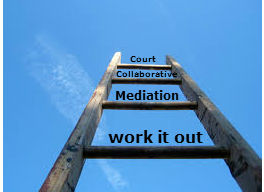
As the year comes to an end there is one thing I always try to do and I want to recommend to you as well. I take a few days near the end of every year to evaluate what has transpired over the past twelve months. I consider what went right and what went wrong. I actually put pen to paper and write down a list of the highs and the lows.
Then I examine the highs with gratitude. I consider each one as a gift. Some were given to me by others or the universe. I am thankful for my beautiful daughter and the wonderful things she has accomplished throughout the year. I am thankful for the others in my circle of family and friends and the joy that each has brought me. And I am blessed to live in Florida where it never gets too cold and I can take a break to walk on the beach anytime I want. These things I have been lucky to have in my life, provided by the universe. I am also thankful for my clients and the opportunity that they have given me to help them through difficult situations. They have trusted me to assist them as they go through a divorce, paternity or other legal matter. Many lawyers find working in Family Law challenging because our clients are under a lot of stress and confusion. But this is not the case in my practice. Because I have chosen to help people in a non-litigated way through these complex transitions, I am able to help them avoid the stress and anxiety that too often accompanies divorce or other family law matters.
When I consider the “lows” of the past year, I try to look at the list with some gratitude as well. Perhaps it is for the lessons I learned such as when I learned that I never wanted to represent a person in a litigated divorce after a year of lows for the anxiety that my clients and I felt. This year one of my “lows” included needing surgery on my ankle and having three months of pain and recovery. But then I must be grateful for the wonderful skills of my surgeon that could perform the operation and that I live in a time when we have the technological skills and equipment to allow this to happen. Generally, I have to say, that this year the list of lows was pretty small. Another blessing.
After making the list of last year, I begin to plan for the year to come. I use the assessment of my highs and lows to reevaluate my practice to see if there are things I should change to make it bigger, better, stronger. I consider how I can improve my health, relationships and spiritual connections. I set goals (not resolutions, those don’t work) and plan some initial actions to begin the year in the right direction. Again, I actually write these down. And at the end of the year I can use this list to evaluate how I did over the past 12 months and where I have to put my attention to achieve my real goals.
I want to recommend this process to my clients, colleagues and friends. In this hectic and overwhelming time that we live, it is important to take a bit of time for yourself to practice some gratitude and makes some plans. I know that, particularly for my clients who are going through stressful times it may be difficult to think of what you are grateful for. However, when times are tough it is even more important to take stock and find the things that are working right.
So, here is to an exceptional, outstanding and wonderful 2016. May you all have many blessings to count this time next year.






